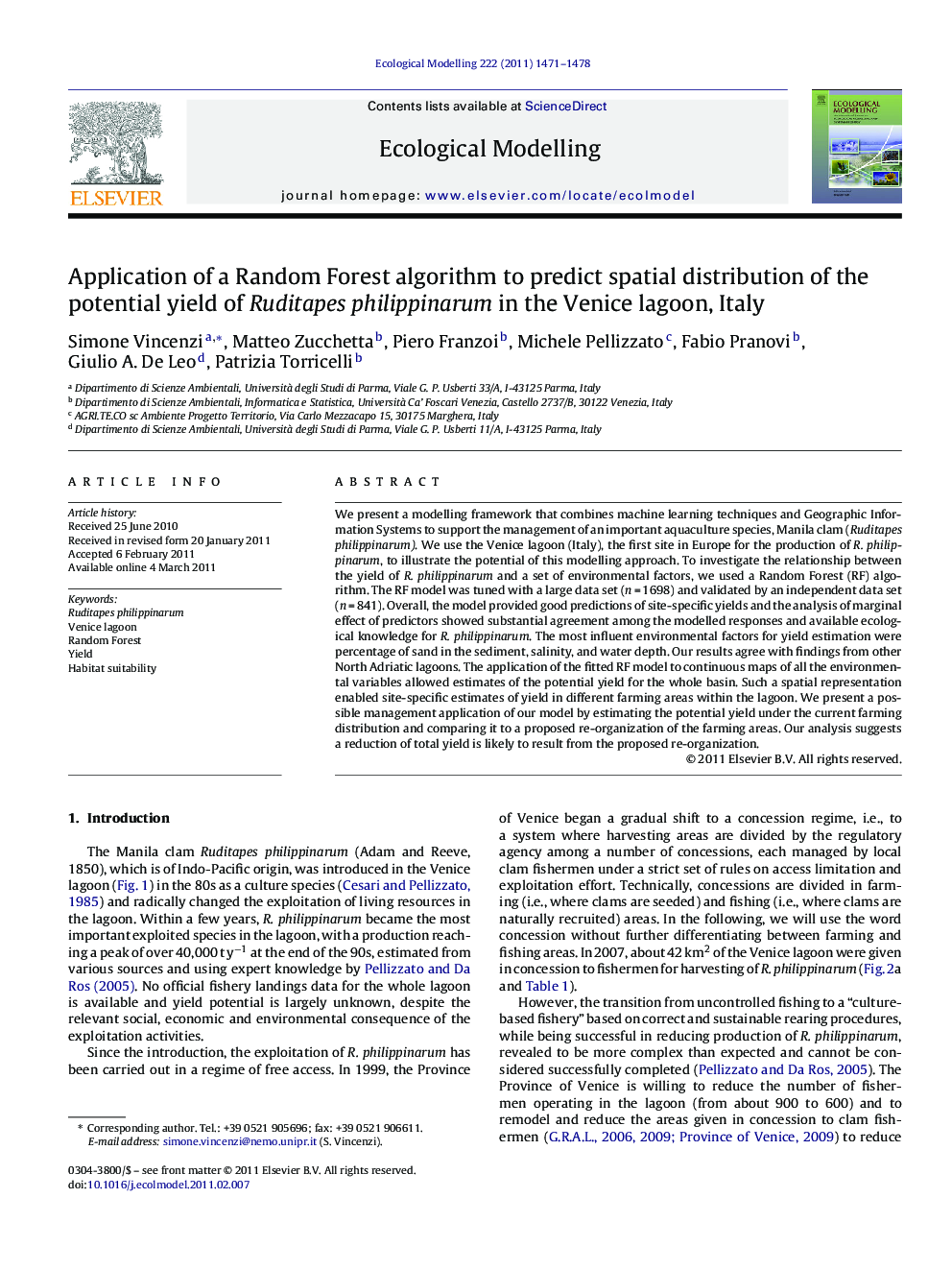| کد مقاله | کد نشریه | سال انتشار | مقاله انگلیسی | نسخه تمام متن |
|---|---|---|---|---|
| 4376976 | 1303403 | 2011 | 8 صفحه PDF | دانلود رایگان |

We present a modelling framework that combines machine learning techniques and Geographic Information Systems to support the management of an important aquaculture species, Manila clam (Ruditapes philippinarum). We use the Venice lagoon (Italy), the first site in Europe for the production of R. philippinarum, to illustrate the potential of this modelling approach. To investigate the relationship between the yield of R. philippinarum and a set of environmental factors, we used a Random Forest (RF) algorithm. The RF model was tuned with a large data set (n = 1698) and validated by an independent data set (n = 841). Overall, the model provided good predictions of site-specific yields and the analysis of marginal effect of predictors showed substantial agreement among the modelled responses and available ecological knowledge for R. philippinarum. The most influent environmental factors for yield estimation were percentage of sand in the sediment, salinity, and water depth. Our results agree with findings from other North Adriatic lagoons. The application of the fitted RF model to continuous maps of all the environmental variables allowed estimates of the potential yield for the whole basin. Such a spatial representation enabled site-specific estimates of yield in different farming areas within the lagoon. We present a possible management application of our model by estimating the potential yield under the current farming distribution and comparing it to a proposed re-organization of the farming areas. Our analysis suggests a reduction of total yield is likely to result from the proposed re-organization.
Research highlights
► We model the yield of R. philippinarum with a Random Forest (RF) algorithm.
► The RF model provides good predictions of site-specific yields.
► The most influent environmental factors are sediment type, salinity, water depth.
► RF model may be integrated with mechanistic models to help organize farming.
Journal: Ecological Modelling - Volume 222, Issue 8, 24 April 2011, Pages 1471–1478